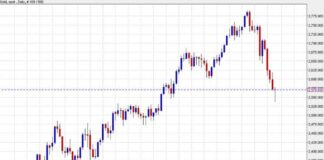Brent Oil Price Outlook: China and OPEC+ Production Growth Impact
The oil market continues to face challenges as the price of a barrel of Brent oil dropped to $71.80 USD by Tuesday. This decline came as fears of slowing demand in China overshadowed concerns about energy shortages due to a storm in the Persian Gulf. The impact of China’s economic growth rate and its transition to low-carbon resources has been a major factor influencing market dynamics. As the world’s largest consumer of raw materials, any fluctuations in China’s oil imports have a ripple effect on global prices.
Market analysts have been closely monitoring developments in China, where sluggish economic growth and a shift towards sustainable energy sources are leading to reduced oil demand. This trend, combined with expectations of decreased oil consumption in Europe and the US post-driving season, has put pressure on market prices. Additionally, some oil refineries are scaling back operations for maintenance, further dampening the demand for raw materials. Despite OPEC+ delaying its planned increase in oil output, concerns about a potential oversupply continue to weigh on prices.
In the midst of these market dynamics, Storm Francine is expected to intensify near Texas, US, potentially reaching Category 2 hurricane status. This weather event could lead to the temporary shutdown of production facilities in Texas until conditions improve, adding to supply concerns.
### Brent Technical Analysis
#### H4 Chart Analysis
Looking at the BRENT H4 chart, it is evident that the market has broken below the $74.96 level and completed a downward wave, reaching $70.50. There is a possibility of a consolidation range forming at the current lows, with a potential upward breakout towards $75.00 (testing from below). Conversely, a downward breakout could extend the range to the local target of $69.69. The technical outlook is supported by the MACD indicator, which shows the signal line below the zero level at the lows, indicating potential growth ahead.
#### H1 Chart Analysis
On the BRENT H1 chart, the market has hit the local target of $70.50 within a downward wave. Currently, a consolidation range is forming above this level, ranging from $71.90 to $70.46. A breakout above $71.90 could lead to a corrective wave towards $75.00, while a breakout below $70.46 may extend the downward trend towards $69.69. The Stochastic oscillator supports this scenario, with its signal line below 20 and poised for growth.
### Impact of China on Brent Oil Prices
China’s role as a major consumer of raw materials has a significant impact on global oil prices. The country’s economic growth trajectory and its transition towards cleaner energy sources have reshaped the dynamics of the oil market. As China reduces its reliance on traditional fossil fuels, the demand for oil imports decreases, leading to price fluctuations in the global market. Investors closely monitor any developments in China that could affect oil consumption patterns and market trends.
### OPEC+ Production Growth and Price Volatility
The decision by OPEC+ to postpone the planned increase in oil output reflects the ongoing efforts to balance supply and demand in the oil market. While this move provided a temporary respite from concerns about oversupply, the potential for a surplus in the near future continues to loom over prices. Market participants remain cautious about the implications of OPEC+ decisions on oil prices and the overall stability of the market.
### Weather Events and Oil Production
The impact of weather events on oil production is a recurring concern for market participants. Storms like Francine, which is expected to intensify near Texas, US, can disrupt production facilities and lead to temporary shutdowns. The potential for a hurricane threat in the region adds another layer of uncertainty to the oil market, as supply disruptions can have a significant impact on prices and market dynamics. Monitoring weather patterns and their potential impact on oil production is crucial for investors and industry stakeholders.
In conclusion, the outlook for Brent oil prices is influenced by a combination of factors, including developments in China, OPEC+ production decisions, and weather events. The market remains sensitive to changes in demand, supply, and geopolitical events, creating volatility and uncertainty for investors. As stakeholders navigate these challenges, staying informed about market trends and factors shaping oil prices is essential for making informed decisions in the ever-evolving oil market landscape.

















